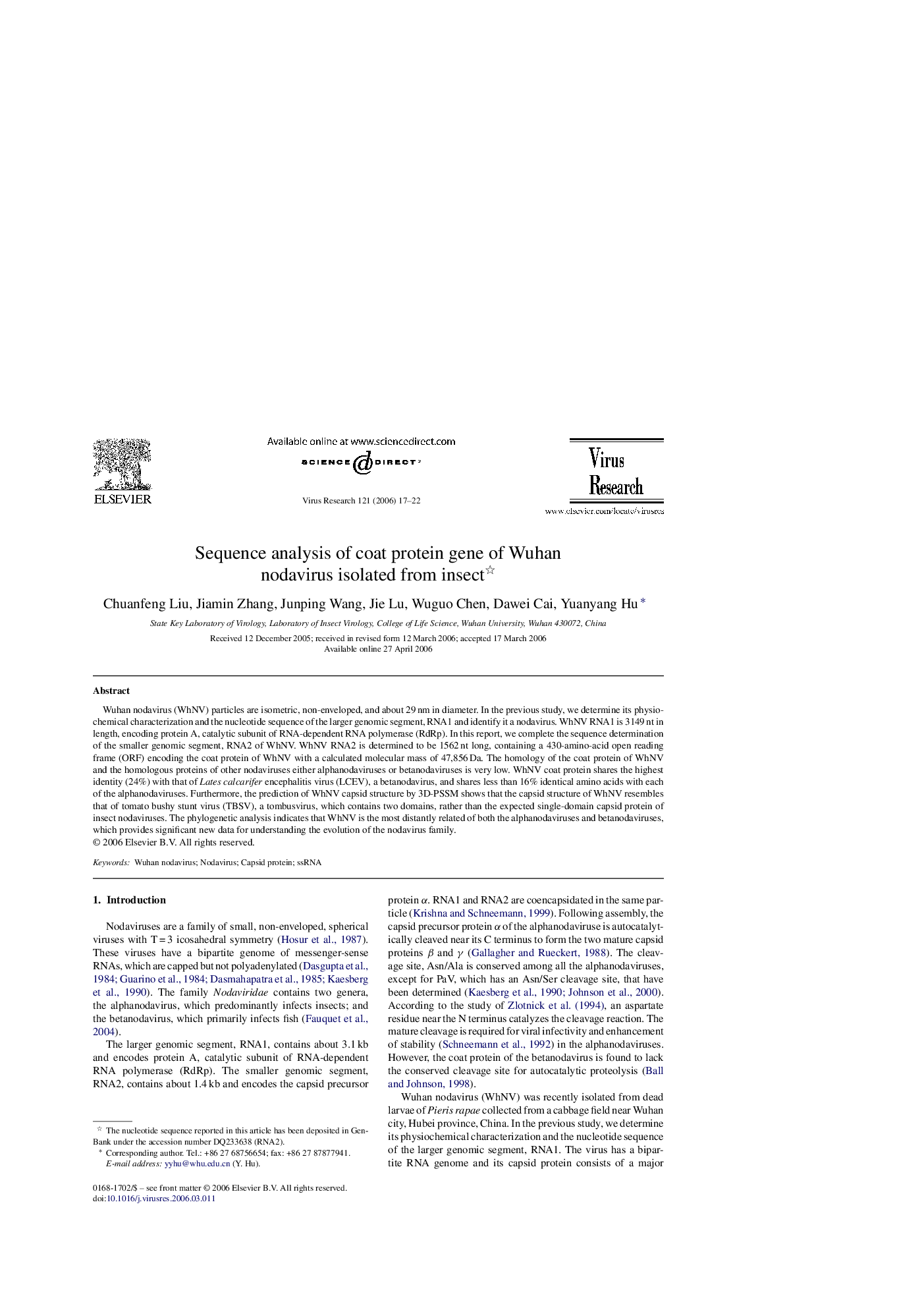| Article ID | Journal | Published Year | Pages | File Type |
|---|---|---|---|---|
| 3431122 | Virus Research | 2006 | 6 Pages |
Wuhan nodavirus (WhNV) particles are isometric, non-enveloped, and about 29 nm in diameter. In the previous study, we determine its physiochemical characterization and the nucleotide sequence of the larger genomic segment, RNA1 and identify it a nodavirus. WhNV RNA1 is 3149 nt in length, encoding protein A, catalytic subunit of RNA-dependent RNA polymerase (RdRp). In this report, we complete the sequence determination of the smaller genomic segment, RNA2 of WhNV. WhNV RNA2 is determined to be 1562 nt long, containing a 430-amino-acid open reading frame (ORF) encoding the coat protein of WhNV with a calculated molecular mass of 47,856 Da. The homology of the coat protein of WhNV and the homologous proteins of other nodaviruses either alphanodaviruses or betanodaviruses is very low. WhNV coat protein shares the highest identity (24%) with that of Lates calcarifer encephalitis virus (LCEV), a betanodavirus, and shares less than 16% identical amino acids with each of the alphanodaviruses. Furthermore, the prediction of WhNV capsid structure by 3D-PSSM shows that the capsid structure of WhNV resembles that of tomato bushy stunt virus (TBSV), a tombusvirus, which contains two domains, rather than the expected single-domain capsid protein of insect nodaviruses. The phylogenetic analysis indicates that WhNV is the most distantly related of both the alphanodaviruses and betanodaviruses, which provides significant new data for understanding the evolution of the nodavirus family.
